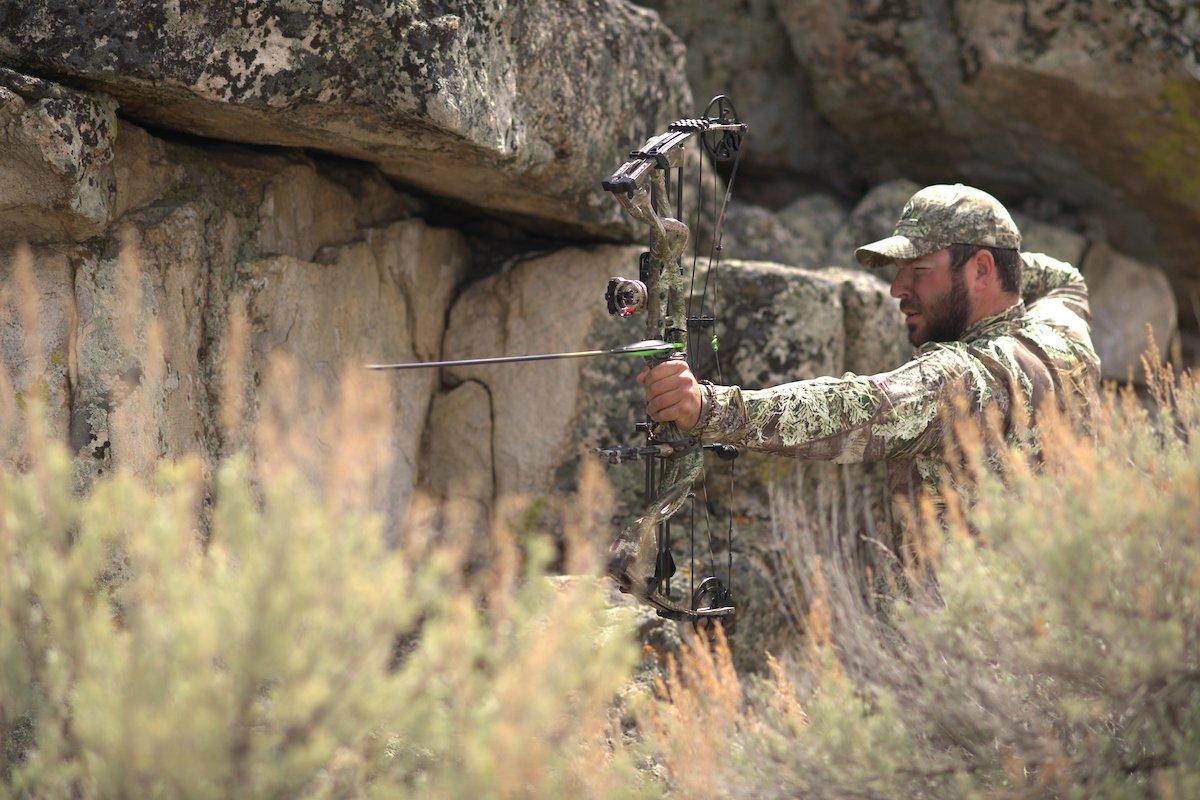Do You Already Do These Things?
Having some trouble filling tags in the woods and on the prairie? Check out these 10 tips to improve your skills and be more successful in the field.
1. Boost Confidence
Despite conventional wisdom, one way to increase shooting confidence is to shoot less. Too much target practice can wear down muscles as well as take its toll on you mentally, reducing your focusing power. You'll simply shoot your best when you're fresh and strong. If you don't believe me, take a week off, then shoot 20 arrows, doing your best to shoot each arrow with full concentration, and waiting a couple minutes in between shots. I bet you'll have one of your best rounds ever. Of course, this only applies to those who shoot year-round and take archery and bowhunting very seriously. This type of training can also work wonders for taming buck fever or target-panic-related problems.
2. Use Compact Broadheads
Short, low-profile fixed broadheads are all the rage since they tune easily, shoot like mechanical heads, and drive deep for deadly penetration. However, be cautious with some models, particularly those sporting larger cutting diameters, approximately 1 3/16-inch or larger. Such models come with ultra-steep blade angles, which can pose a problem on angled hits, sometimes causing arrow energy to divert away from the desired impact spot. This increases the chance of a complete ricochet as well, if impact with rib or shoulder bone occurs. The largest compact head I personally use is the G5 Striker, which has a 1 1/8-inch cut and a somewhat steep blade angle. However, the broadhead's cut-on-contact nose seems to counter its abrupt degree of blade angle, helping to maintain that important straight-line energy factor, despite angled impact. Also, durable, razor-sharp blades are twice as important on compact heads, since they boast less cutting surface overall. For this reason, you want blades that stay sharp despite resistance with targets and quiver foam. German-Lutz blades are the best I've used, which are found on the G5 Striker as well as the Slick Trick 4-Blade.
Don't Miss: Archery Tips from the Pros
3. Set the Proper Draw Length
All great archers utilize good shooting form, and good form starts with using a bow that fits well. The most important variable here is draw length. Too long of a draw can hyperextend your arms and muscles, preventing the use of back tension, which is a must for firm string pressure and consistent releases. Too short a draw and you'll feel scrunched, causing a variety of issues, including poor follow-through, and/or release errors. The best way to determine correct draw length is to look at the archer's elbow. With the archer at full draw, while looking from behind him, the draw-side elbow should be in line with the arrow and the target, not positioned to the left or right. For a right-handed archer, a left elbow means too long of a draw; a right elbow, too short. Also, looking from the side, draw an imaginary line across the arrow to the elbow. The middle of the elbow should be even with this line or be slightly above it. These are the telltale signs of correct draw length.
4. Have Peak Bow Performance
If a bow were a car, then its bowstrings would be the drive train, the bowsight the steering wheel, and the arrow rest the tires. If one fails to operate properly, the arrow misses its target. The key is to keep these mechanisms in perfect working order. Since hunting gear takes a beating, durability is of utmost importance. For this reason, upgrade to the best accessories available within your budget in an effort to keep everything absolutely consistent. I use Winner's Choice Bowstrings for two specific reasons: They fail to creep over time, despite inclement hunting weather, and also because the string servings never seem to unravel, which ruins accuracy. I also use stout, ultra-durable, nearly all-metal arrow rests and bowsights, because these reduce the chance of failure. Most importantly, once the arrow rest and sight are adjusted perfectly, I inscribe several marks using the edge of a knife in key places along the vertical and horizontal adjustment bars. This way, if anything gets bumped out of place, I'll know with a quick glance. I've actually made it a habit to look at these marks every few hours while hunting. It instills confidence. Ordinary ink markers work just as effectively, however, ink can wear off, especially in wet weather.
Don't Miss: Bowhunting Tips for Out West
5. Hunt Glare Free
If you hunt out West, especially stalking game on the ground, shiny equipment can blow your chances of success. I once climbed a hill in the mountains while a friend watched. From several hundred yards away, he couldn't see my camouflage-covered body and bow, but the sleek, shiny arrows in my quiver sent out a powerful, reflective shimmer of light. He was blown away. Bright, glaring objects are simply unnatural in the wild, aside from the reflective surface of a wet rock or shallow-filled creek. So, when a deer spots an unusual flash in the distance, you can bet you'll have his full attention. Look your gear over closely for signs of a reflective sheen. The best way to rid yourself of any shiny surfaces is to use dull-colored spray paint or tape, or rub out the glare using sandpaper. Bottom line: If you're serious about stalking western big game, you'll be sure you're as reflective-free as a raw piece of cowhide.
6. Binocular Up
Traveling light is good, but leaving the binocular behind is a huge mistake. Out West, the benefits of a binocular while hunting open terrain are quite obvious. But for deep-woods treestand hunting, the advantages are not so cut and dry. Nevertheless, experienced stand hunters know all about the importance of having good optics. The key to effective treestand hunting is shot preparation. Rutting whitetails move around quickly and you need to be ready at full draw once that big buck hits your narrow shooting lane. You don't need to be confused, wondering if the approaching deer is a shooter or not. This is where a bright, clear and lightweight 7x30 or 8x30 binocular comes in handy. Once a deer is in the neighborhood, give him a magnified look over, so you can get down to business with the shot. It can make or break your success.
Don't Miss: 10 Off-Season Archery Tips from the Pros
7. Use the Right Colored Fletching
Bowhunters love the idea of using bright, florescent fletching and/or cresting for maximum visibility. However, deer can spot glowing fletching, particularly during dusk or dawn when these colors become grossly illuminated. It's best to use dull-colored fletching (such as dark orange or red) or cover your fletching using a camouflage cover of some kind. Also, realize that using cresting adds a bit of weight to the rear portion of your arrow, which takes away from crucial front-of-center weight. Cresting may make arrows easier to find on the ground, but realize this feature could come with a slight accuracy loss.
8. Practice Up-Close Shots
Close-range shooting is great for ingraining proper shooting form. Do this with your eyes closed on a blank bale until you gain a smooth feel of the shot. This is the feeling you want to duplicate on every shot. However, once you move back to shoot a target, you might find it increasingly difficult to gain feel for the shot again. If this happens, move in closer, to about 10 or 15 yards, and shoot at a larger target without a distinct bull's-eye, like a circle spray-painted on a burlap bag. From this distance, your mind will be less anxious about sight-pin movement, allowing you to focus on the feel of the shot once again. The large aiming circle will also prevent you from finding a small spot to aim at, keeping your pin floating freely about while you focus on executing a good-feeling shot. Also, I suggest aiming at the circle using various sight pins, not just your top pin. This will increase familiarity with peep/sight-pin alignment when taking longer shots. This is vital for western bowhunters who often shoot out to 50 yards or so.
Don't Miss: 10 Bowhunting Tips from Tyler Jordan
9. Avoid Stalking's Greatest Sin
A lot of bowhunters like to rush into a stalk before noting the exact whereabouts of the animal they're after, a tendency usually caused from over-excitement or over-confidence. Bottom line: Terrain from a distance will always look strangely odd from up close. For this reason, you must carefully scrutinize terrain, inside and out. The best way to plan your route is to visually home in on key landmarks, such as trees, rocks, bushes, etc., which will assist during travel. I prefer the most highly visible objects my eyes can see, especially those that are uniquely configured or colored. These will prove most reliable once the country turns unfamiliar, and trust me, it will. Also, never pick out just one landmark, but two, three or more. Remember, public-land animals are super savvy; their eyes are always glued to the landscape, while their noses keep tabs on foul-smelling wind. The chink in the armor is small, and there's little room for error on your part. Choose the quietest, safest route, keep the wind in your favor, and strike in the shortest amount of time possible.
10. Master Fast Rangefinder Use
Hunting shots usually come fast, so a rangefinder out of easy arm's reach is pretty much useless. To make quick, effective use of a rangefinder, insist on carrying it in a hip pouch or around your neck so you can grab it in short order. Nearly all pouches supplied with rangefinders are too noisy and/or too tight fitting for easy use. Aftermarket pouches are a better choice, particularly those made out of high-nap fleece, which provide maximum stealth. I personally prefer to carry my rangefinder around my neck using a short lanyard, which I lace with fleece tape for added comfort. It rides just above my binocular, where it's out of the way and where I can tuck it in my shirt. This way, in a near blink of an eye, I can grab the unit, bring it to my eye and drop it, then shoot. I often cover my entire rangefinder with fleece tape to increase warmth and to dull sound when it clanks into my binocular, calls or other equipment.
Don't Miss: 10 Bowhunting Sins
Editor's Note: This was originally published in 2005.
Are you a bowhunter wanting to learn how to accomplish your goals? Check out our stories, videos and hard-hitting how-to's on bowhunting.








